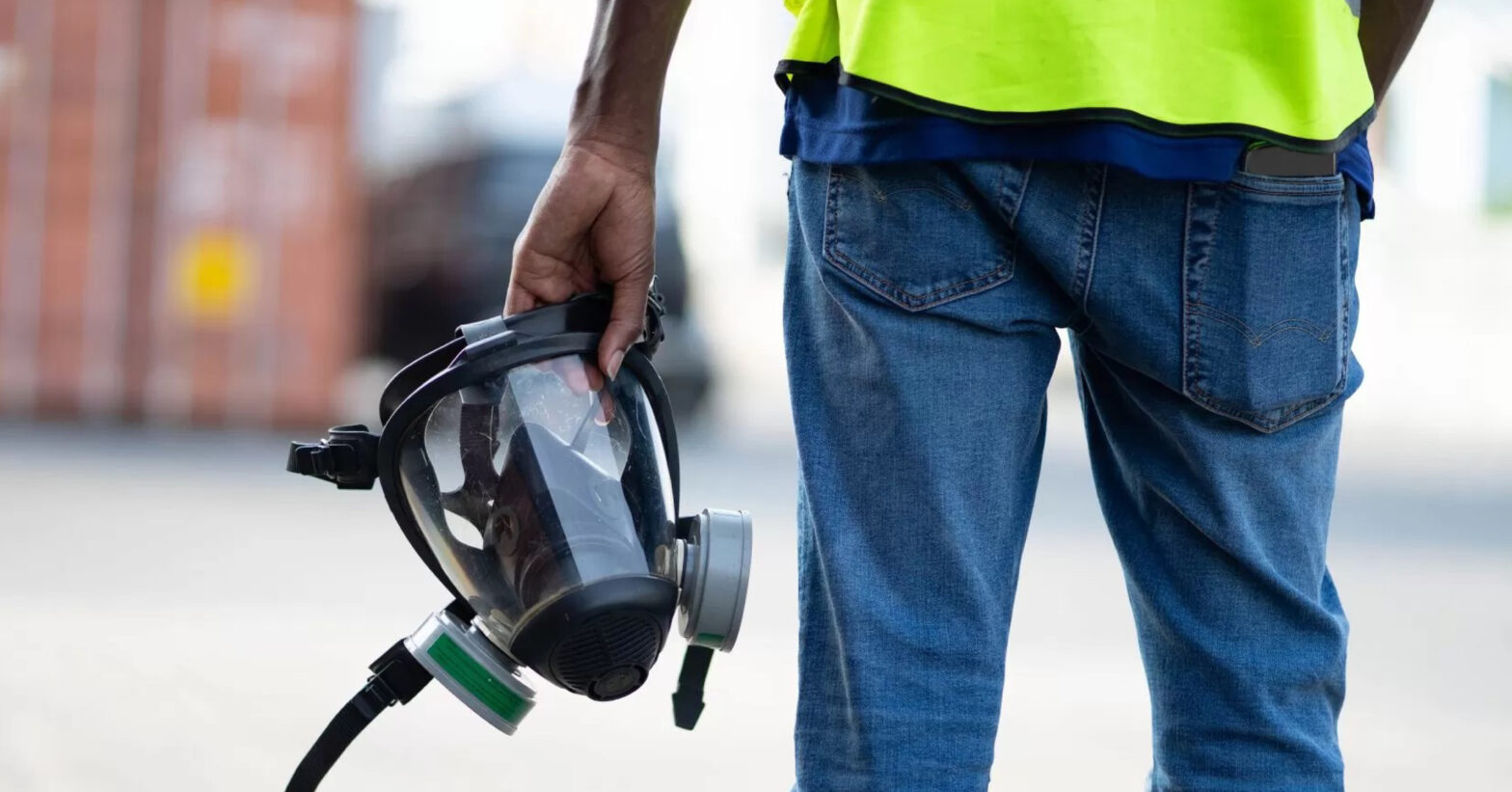
Chemical hazards are common in many construction site environments. These risks originate from chemicals used in processes, chemicals stored on-site, and chemicals in soil and water. This blog will delve into the typical chemical hazards encountered on construction sites and how to protect yourself and your staff.
Chemical hazards on site
Construction sites manifest various chemical hazards in multiple forms, such as dust, fumes, fibres, liquids, mists, gases, and vapours. Workers can be exposed to these substances through different entry points, including inhalation, ingestion, absorption, and injection.
- Inhalation: The act of breathing in is the most common route of exposure in a work setting. Construction workers may inhale airborne particles during demolition, painting, or welding.
- Ingestion: Accidental swallowing of chemicals can occur through eating, drinking, or smoking in contaminated areas. Workers must be vigilant to prevent accidental ingestion.
- Absorption: Skin contact with hazardous substances is another significant concern. Construction materials, like concrete or insulation, may contain chemicals that can be absorbed through the skin.
- Injection: Puncture wounds or cuts can introduce chemicals directly into the bloodstream. This can happen when workers handle sharp objects or come into contact with equipment that punctures the skin.
Understanding the routes of exposure is crucial, as workers need to be aware of the hazards present on sites and take appropriate measures to protect themselves. Let’s examine specific chemical hazards that construction workers commonly encounter and the potential health implications.
There are two types of health effects of chemical exposure:
- Acute Effects: Immediate and severe health effects that occur shortly after exposure. For instance, workers exposed to carbon monoxide may experience symptoms like headaches, dizziness, or even collapse.
- Chronic Effects: Develop over time after continual or repeated exposure. Long-term exposure to substances like asbestos can result in chronic conditions such as lung cancer.
What Chemical hazards do you need to be aware of?
Asbestos Exposure
Construction workers may be exposed to asbestos during the demolition or remodelling of old buildings. Asbestos can also be found in taping compounds, asbestos cement, pipes and floor tiles. Significant asbestos exposure can cause breathing issues and cancer.
Welding Fumes
The fumes generated during welding contain various chemicals depending on the welded materials. Acute exposure can irritate the eyes, nose, and throat, while prolonged exposure may result in long-term effects such as lung damage and various types of cancer.
Solvents
Various solvents with varying toxicity degrees are used in construction. These are typically found in paints, glues, and epoxies. Exposure to solvents can lead to toxicity in the nervous system, reproductive damage, liver and kidney damage, respiratory impairment, and even cancer.
Silica
Silica exposure is a significant concern for construction workers. These can be found in materials like concrete and stone. Exposure to excessive silica dust can cause lung scarring and disease over time, particularly when fine particles are inhaled.
Lead
Lead exposure is a risk in activities like bridge repair, paint removal, and demolition of old buildings with lead paint. Acute symptoms include nausea, vomiting, and fatigue, while chronic exposure can lead to severe damage to the central nervous and reproductive systems. Lead is very toxic and can cause several health problems. Workers can be exposed to lead during bridge repair work, paint removal, or when using lead solder.
How to protect workers from chemical hazards
The key to protecting workers from chemical hazards is utilising engineering controls, administrative controls, and personal protective equipment (PPE). Engineering controls involve ventilation, substitution, and process change, while administrative controls focus on altering work schedules or tasks. PPE should only be used as a last resort as it doesn’t eliminate exposure entirely.
- Engineering Controls:
Ventilation: The most common form of engineering control in construction involves using local or general exhaust ventilation to remove contaminants from the air before reaching the worker’s breathing zone.
Substitution: Replacing hazardous materials with less harmful alternatives. For instance, using water-based paint instead of solvent-based paint.
Process Change: Modifying how a task is performed to reduce exposure. For example, using a power washer instead of a pressure washer to remove lead-containing paint.
- Administrative Controls:
Changing how work is scheduled or performed to reduce exposure. This may involve restricting certain chemicals to specific tasks or areas, increasing ventilation, or providing workers with frequent breaks.
- Personal Protective Equipment (PPE):
Includes clothing, gloves, eye and face protection, respiratory protection, and hearing protection. PPE should only be used as a last resort when engineering and administrative controls are not feasible or effective in reducing exposure to a hazard.
Conclusion
In the dynamic construction world, where progress and innovation thrive, it’s crucial to acknowledge and mitigate the invisible threats posed by chemical hazards. By understanding the various forms of exposure and implementing effective control measures, workers can strengthen themselves against these unseen adversaries, ensuring their safety and well-being.




![stronghold global logo[94]](https://www.strongholdglobal.com/wp-content/uploads/2022/03/Stronghold-Global-Logo94.png)




